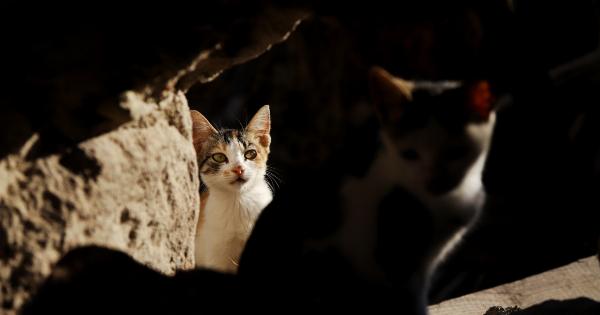Just like humans, cats can suffer from a variety of health issues, including hip dysplasia.
Hip dysplasia is a condition that affects the ball and socket joint of the hip, causing the joint to wear down and the bones to rub against each other, resulting in pain and discomfort for your furry friend. The condition can be challenging to diagnose, but with proper treatment, cats can live a happy, healthy life.
What is hip dysplasia?
Hip dysplasia occurs when the ball and socket joint of the hip do not fit perfectly together, causing the joint to wear down over time. The joint can become loose, causing pain and discomfort for your cat.
Hip dysplasia can occur in cats of any age but is most commonly seen in older cats, especially those who are overweight or have a genetic predisposition for the condition.
What causes hip dysplasia in cats?
There are several factors that can contribute to the development of hip dysplasia in cats, including:.
- Genetics – certain breeds of cats are more prone to hip dysplasia, such as Maine Coons and Persians.
- Age – hip dysplasia is more frequently seen in older cats, as the cartilage in their joints begins to deteriorate.
- Obesity – excess weight places additional pressure on the joints, contributing to the development of hip dysplasia.
What are the symptoms of hip dysplasia?
The symptoms of hip dysplasia in cats can vary from mild to severe, and may include:.
- Limping or lameness in one or both hind legs
- Stiffness in the hips
- Difficulty rising from a lying position
- Reluctance to jump or climb
- Pain when touched or handled
- Inability to run or play normally
- Muscle atrophy (wasting away of the leg muscles)
Diagnosing hip dysplasia in cats
Diagnosing hip dysplasia in cats can be challenging, as symptoms may not appear until the disease has progressed to an advanced stage. Your veterinarian may perform a physical exam and take X-rays to assess the condition of your cat’s hip joint.
They may also perform a blood test or joint fluid analysis to rule out other conditions.
Treating hip dysplasia in cats
There are several treatment options available for cats with hip dysplasia, including:.
- Weight management – if your cat is overweight, your veterinarian may recommend a weight loss program to reduce the pressure on their joints.
- Exercise – gentle exercise, such as walking or swimming, can be beneficial in improving joint mobility and reducing pain
- Pain management – your veterinarian may prescribe pain medication to manage your cat’s pain and discomfort.
- Surgery – in severe cases, surgery may be necessary to improve your cat’s mobility and quality of life.
Preventing hip dysplasia in cats
While some cats may be genetically predisposed to hip dysplasia, there are steps you can take to reduce their risk. These include:.
- Maintain a healthy weight for your cat.
- Ensure your cat gets regular exercise.
- Choose a reputable breeder when selecting a kitten.
- Provide a high-quality diet to support joint health.
Caring for a cat with hip dysplasia
Living with a cat with hip dysplasia can be challenging, but there are steps you can take to make their life more comfortable.
Ensure they have a comfortable bed that is easy to access, and provide a litter box with low sides to reduce the amount of jumping required. Avoid activities that may cause pain or discomfort, such as jumping or climbing, and ensure they receive regular veterinary care.
Conclusion
Hip dysplasia is a painful condition that can significantly impact your cat’s quality of life. While there is no cure for the condition, early diagnosis and treatment can help to manage symptoms and prevent disease progression.
By taking steps to prevent hip dysplasia and adopting a proactive approach to your cat’s care, you can help to ensure they live a happy, healthy life.






























